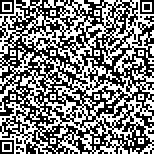下载中心
优秀审稿专家
优秀论文
相关链接
摘要

植被光合有效辐射吸收比率FPAR(Fraction of absorbed Photosynthetically Active Radiation)反映了植被冠层的光学特性,是表征植被光合作用水平和生长状态的重要参量,因此成为全球变化研究中多种过程模型的重要输入参数。随着定量遥感研究的深入和新型传感器的使用,从区域到全球尺度上的FPAR遥感估算方法不断提出,多样化的遥感FPAR产品越来越多地应用于碳循环、能量循环、生产力估算及作物估产等研究领域。本文梳理了遥感估算的植被光合有效辐射的相关概念和算法,并着重对过去十年间遥感估算FPAR的新进展进行了系统总结和探讨。研究表明,近年来FPAR遥感的研究工作一方面聚焦于对现有算法的改进与各类型产品的验证,更多的研究则侧重于FPAR概念体系的拓展,叶片、叶绿素水平的FPAR估算,直射光、散射光的FPAR建模等新方向逐渐成为研究热点。
关键词:
植被定量遥感 光合有效辐射吸收比率 冠层吸收模型 遥感算法 产品及验证The Fraction of absorbed Photosynthetically Active Radiation(FPAR) is a key parameter in various global change process model, which characterizes the optical properties, photosynthesis process and growth state of canopy. The great progress of quantitative remote sensing and various data products make FPAR products widely used in carbon cycle, energy exchange and vegetation research both in global and regional scale. Because of the spatial heterogeneity of landscape, remote sensing is the only to monitor in large scale. Various methods were developed to obtain FPAR based on remote sensing technique. Empirical method based on the relationship between FPAR and vegetation index. High efficiency is the main feature of empirical method and the limit is that the generality of empirical relationship is weak. Physical method based on canopy model such as geometrical optics model and radiative transfer model which can be used in different kinds of land cover and large scale areas. But the input parameter and calculation process of physical method is relatively complex, which can influence the accuracy of result. In order to improve the accuracy of research, high quality and temporal resolution FPAR estimation is needed. In recent years, the improvement of FPAR algorithms, validation of FPAR products, FPAR of leaf and chlorophyll levels, direct and scattered FPAR (direct light and diffused light) and FPAR vertical distribution became new topics in this area. This paper reviewed the theory and methods of FPAR retrieval from remote sensing, and discussed the new progress of remotely sensed FPAR in past 10 years. The conclusion shows that research of FPAR is more and more important in recent years and the concept and scientific problems are gradually clear. New canopy models and algorithms improve the accuracy of products which promote the use of FPAR in various study areas. Especially, neural network becomes a new way of FPAR inversion which can avoid weak point of physic methods and improve the efficiency of the process. But there are also many aspects need to do in future. The accuracy of FPAR products still cannot reach the standard and products based on high spatial resolution data are required. Day average FPAR product is also important work to Net Primary Productivity (NPP) models. Canopy models also need to be improved in order to fit different kinds of vegetation. On the other hand, we need more high quality FPAR observation systems over the world to get enough reliable in-situ data for validation. Progress in photosynthesis mechanism research and sensors make it possible to realization these targets. New sensors were put in use in recent years. Improve the accuracy and diversity of remote sensing FPAR based on new generation satellite instrument will promote the application for FPAR in various fields.

